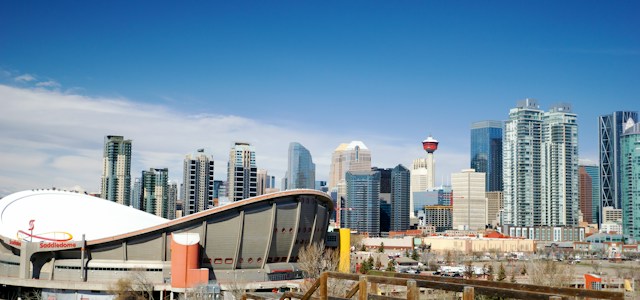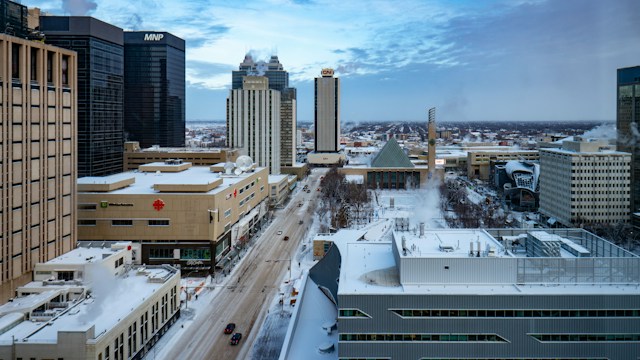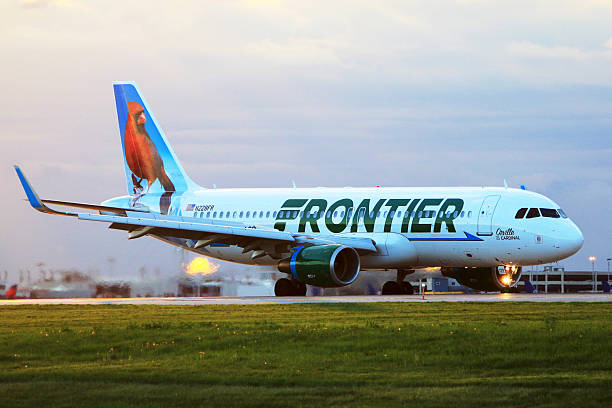Alberta, a province in western Canada, is known for its stunning landscapes, thriving cities, and robust economy. As individuals contemplate moving to or within Canada, understanding the cost of living in specific provinces becomes crucial. This article delves into the intricacies of the cost of living in Alberta, examining various factors that contribute to the overall expenses for residents.
Housing Costs:
One of the primary components influencing the cost of living is housing. In Alberta, the housing market is diverse, offering options ranging from urban condominiums to suburban houses and rural properties. The cost of housing can vary significantly depending on the location and type of dwelling. Major cities like Calgary and Edmonton generally have higher housing costs compared to smaller towns or rural areas. Renting and buying patterns will be explored, along with insights into the impact of the real estate market on residents.

Utilities and Energy Expenses:
Beyond housing, utilities and energy expenses play a crucial role in the overall cost of living. Alberta is known for its cold winters, leading to increased heating costs. Understanding the average expenses for electricity, heating, water, and other utilities is essential for residents to budget effectively. Additionally, exploring any government initiatives or programs aimed at reducing energy costs can provide valuable insights for individuals looking to manage their utility bills.
Transportation:
Transportation costs are a significant factor in the overall cost of living equation. Alberta’s vast expanse may require residents to commute long distances, impacting their transportation expenses. The article will delve into the cost of owning a vehicle, public transportation options, and potential savings through carpooling or alternative modes of transport. An analysis of the impact of fuel prices and insurance costs on the overall transportation budget will also be included.
Healthcare and Education:
Access to quality healthcare and education is a fundamental consideration for individuals and families. Alberta boasts a well-established healthcare system and a range of educational institutions. The article will explore the associated costs, including health insurance, medical services, and educational expenses. Understanding the options available for residents in terms of healthcare plans and educational institutions will provide a comprehensive overview of these critical aspects.
Groceries and Consumer Goods:
The cost of groceries and everyday consumer goods can significantly contribute to the overall cost of living. Examining the prices of essential items, comparing them across different regions within Alberta, and identifying cost-saving strategies for grocery shopping will be discussed in this section. Insights into the impact of inflation and economic factors on the prices of consumer goods will provide a holistic perspective.

Recreation and Entertainment:
Maintaining a balanced lifestyle involves recreation and entertainment activities. Alberta offers a plethora of recreational opportunities, from outdoor adventures to cultural events. This section will explore the costs associated with leisure activities, entertainment venues, and cultural events. Additionally, the article will touch upon budget-friendly options and community initiatives that contribute to a vibrant and affordable social life.
Understanding the cost of living in Alberta requires a comprehensive analysis of various factors, including housing, utilities, transportation, healthcare, education, groceries, and recreation. By delving into each aspect, individuals can make informed decisions when considering a move to this dynamic Canadian province. Whether you are a current resident or contemplating a relocation, this article aims to provide valuable insights into the financial aspects of living in Alberta.
Employment and Income:
An essential aspect of the cost of living equation is the employment landscape and income levels in Alberta. The province is known for its thriving economy, particularly in industries such as oil and gas, agriculture, and technology. This section will explore the average income levels, job market trends, and the impact of employment opportunities on the overall financial well-being of residents. Understanding the employment landscape is crucial for individuals planning to relocate to Alberta or those seeking new career opportunities within the province.
Taxes:
Taxes are a significant factor affecting the cost of living, and Alberta has a unique tax structure compared to other provinces in Canada. The absence of a provincial sales tax and a lower income tax rate can have a positive impact on residents’ disposable income. This section will delve into the tax landscape in Alberta, exploring both the advantages and potential drawbacks. Understanding the tax implications is crucial for individuals seeking to manage their finances effectively and plan for their long-term financial goals.

Economic Outlook and Trends:
The economic outlook and trends in Alberta play a crucial role in shaping the cost of living. Factors such as economic growth, inflation rates, and market trends can impact various aspects of residents’ expenses. This section will analyze the current economic landscape in Alberta, providing insights into key indicators that may influence the cost of living in the near future. Understanding economic trends can help residents make informed financial decisions and adapt to potential changes in the cost of living.
Cost of Living Index:
To provide a comprehensive overview, this article will explore the Cost of Living Index for Alberta. The index considers various factors, including housing, utilities, transportation, groceries, and healthcare, to quantify the relative cost of living in different regions. By examining the Cost of Living Index, readers can gain a comparative perspective on how Alberta fares in terms of affordability compared to other provinces and regions in Canada.
The cost of living in Alberta is a multifaceted topic influenced by numerous factors. This comprehensive analysis has explored key elements, including housing costs, utilities, transportation, healthcare, education, groceries, recreation, employment, taxes, economic outlook, and the Cost of Living Index. Whether you are a current resident, considering a move to Alberta, or simply seeking to manage your finances more effectively, understanding these factors is essential. Alberta’s unique combination of economic opportunities, natural beauty, and diverse communities make it an attractive destination, and this article aims to empower individuals with the knowledge needed to navigate the financial aspects of living in this dynamic province.
Social Services and Support Programs:
In addition to employment and income, social services and support programs contribute to the overall cost of living equation. Alberta provides various social services, including childcare support, housing assistance, and programs for vulnerable populations. This section will explore the availability of social services and their impact on residents’ financial well-being. Understanding the support systems in place can be crucial for individuals and families, especially during challenging times or economic uncertainties.
Quality of Life Considerations:
While the cost of living is a significant factor, quality of life considerations are equally important. Alberta offers a high quality of life with its clean and safe communities, access to outdoor activities, cultural diversity, and vibrant arts scene. This section will delve into the intangible aspects of living in Alberta that contribute to an enriched and fulfilling life. Balancing the cost of living with the overall quality of life is essential for individuals seeking a well-rounded and satisfying lifestyle.
Tips for Cost Savings:
To provide practical insights, this section will offer tips and strategies for cost savings in various aspects of daily life. Whether it’s budgeting for groceries, finding affordable housing options, or taking advantage of government programs, readers will gain valuable advice on managing their expenses. Practical tips for saving money without compromising on lifestyle will empower individuals to navigate the cost of living in Alberta more effectively.
Future Trends and Considerations:
The cost of living is dynamic and subject to change over time. This section will explore future trends and considerations that may impact the cost of living in Alberta. Factors such as urban development, technological advancements, and environmental policies can influence housing costs, transportation options, and overall living expenses. Staying informed about future trends can help residents make proactive decisions to adapt to potential changes in the cost of living landscape.
In conclusion, the cost of living in Alberta is a multifaceted concept influenced by a wide range of factors. This comprehensive analysis has covered essential elements, including social services, quality of life considerations, tips for cost savings, and future trends. Alberta’s dynamic and diverse landscape, coupled with its economic opportunities, makes it a unique province to live in. By understanding the various facets of the cost of living, individuals can make informed decisions, plan their finances effectively, and enjoy a balanced and fulfilling life in Alberta.













